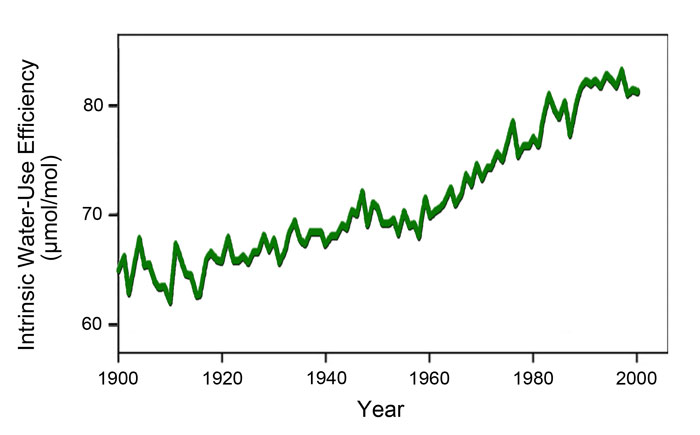| Tweet | Follow @co2science |
Paper Reviewed
Saurer, M., Spahni, R., Frank, D.C., Joos, F., Leuenberger, M., Loader, N.J., McCarroll, D., Gagen, M., Poulter, B., Siegwolf, R.W., Andreu-Hayles, L., Boettger, T., Linan, I.D., Fairchild, I.J., Friedrich, M., Gutierrez, S., Haupt, M., Hilasvuori, E., Heinrich, I., Helle, G., Grudd, H., Jalkanen, R., Levanic, T., Linderholm, H.W., Robertson, I., Sonninen, E., Treydte, K., Waterhouse, J.S., Woodley, E.J., Wynn, P.M. and Young, G.H.F. 2014. Spatial variability and temporal trends in water-use efficiency of European forests. Global Change Biology 20: 3700-3712.
Introducing their study published in Global Change Biology, Saurer et al. (2014) write that "the increasing carbon dioxide concentration in the atmosphere in combination with climatic changes throughout the last century are likely to have had a profound effect on the physiology of trees," altering, as they are known to do, the carbon dioxide and water vapor fluxes that pass - in opposite directions - through the stomatal pores of their needles or leaves, by which means they impact the trees' intrinsic water-use efficiency or iWUE, which is the ratio of photosynthesis to stomatal conductance.
Desiring to learn both the long-term and wide-spread consequences of this phenomenon as it may have functioned over the hundred-year period 1901 to 2000, the 31 researchers - hailing from nine different countries - established a network of 35 tree-ring sites throughout Europe, from cores of the trunks of which trees they assessed stable carbon isotope ratios (δ13C) on a yearly basis, which enabled them to calculate iWUE on a yearly basis.
Averaged over all the study sites, the tree-ring δ13C-derived iWUE showed, in Saurer et al.'s words, "a strongly increasing trend over the course of the 20th century," which ranged from a mean value of 64.2 µmol/mol over the first decade to a mean value of 81.9 µmol/mol over the last decade (see figure below). And they add that the strongest increase occurred within the temperate forests of Central Europe, which they describe as a region where summer soil-water availability actually decreased over the last century.
Thank goodness for rising atmospheric CO2, which is the primary reason for the observed iWUE increase (see Water Use Efficiency: Trees for much more information on this topic)!!!

Tree-ring δ13C-derived iWUE of European forests over the period 1901-2000. Adapted from Saurer et al. (2014).




